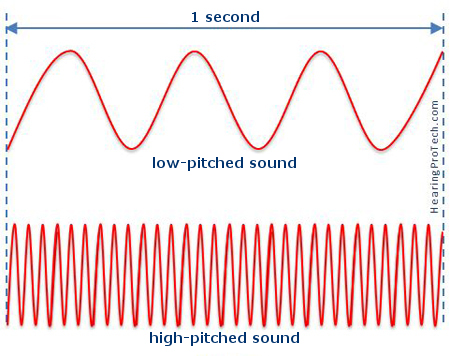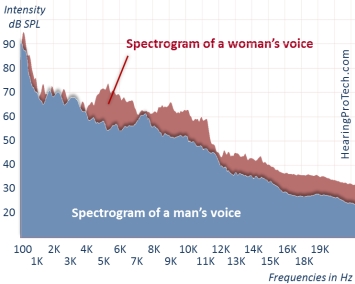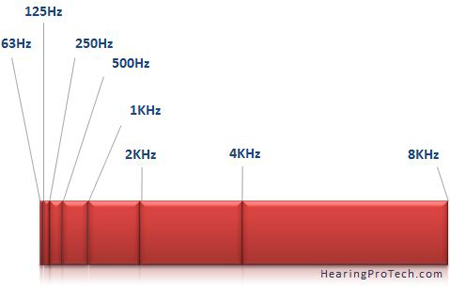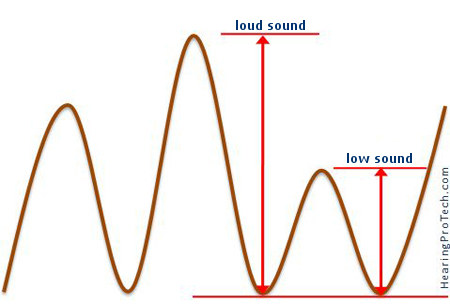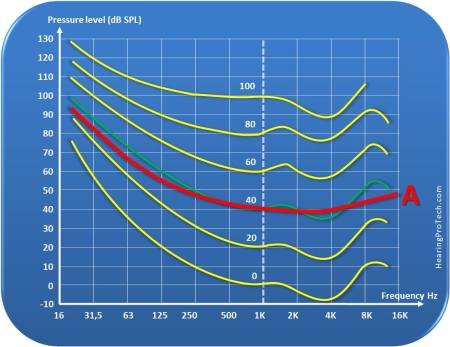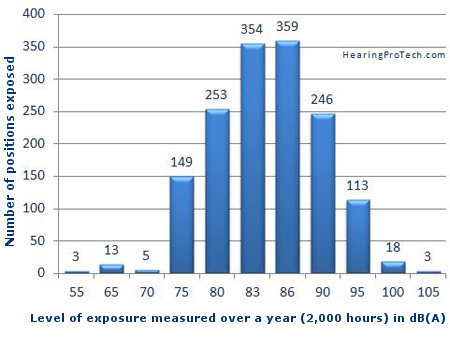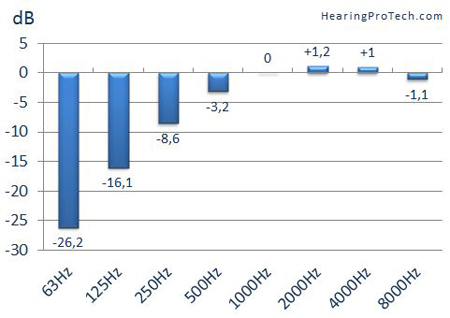A sound is characterized by its frequency and intensity.
Frequency
Frequency corresponds to the number of vibrations (oscillations) in one second, expressed in Hertz (100 Hz = 100 vibrations/second). The lower the frequency (fewer vibrations per second), the more bass the sound has, and conversely, the higher the frequency, the more treble the sound has.
Illustration of bass and treble
We know that as we age, the perception of high frequencies decreases. At the age where an ear is perfectly developed (0 to 30 years), the maximum audible frequency is unpredictable. Some people do not perceive anything beyond 8000 Hz, while others hear up to 24,000 Hz.
It is the same for low frequencies; the variability from one individual to the other ranges from 10 Hz to 30 Hz.
Scale of sound frequencies
All voice frequencies range from about 120 Hz to 8 kHz. Male and female voices differ in the fundamental frequency of the vocal cords: about 100 Hz for male voices and about 120 Hz for female voices.
Pure sound has only one frequency; in music for example, "A440" or "A4" has a frequency of 440 Hz.
The octave band is a classification that is musical in origin. When a frequency is doubled or divided by 2, it is said to increase or decrease by one octave, for example: 125 Hz and 250 Hz, and then 250 Hz and 500 Hz. The sound spectrum (audible) is divided into 10 octaves.
Octave band
In acoustics, an octave refers to a doubling of a frequency. In music, "C, D, E, F, G, A, B, C" is an octave (each note represents a degree; an octave is thus composed of 7 degrees).
Reduced octave bands are used for the characterization
of personal hearing protectors.
Intensity
The perceived intensity depends on the amplitude. The ear is non-linear, and the measurement is performed using a logarithmic scale, with the decibel (dB) as the unit of measurement.
A sound intensity of 70 dB is 2 times weaker than a sound at 73 dB.
A sound intensity of 80 dB is 10 times stronger than a sound at 70 dB.
A sound intensity of 90 dB is 100 times stronger than a sound at 70 dB.
So much for the mathematical rules; in reality, it takes a difference of 10 decibels to have the sensation of doubling of sound.
The amplitude of the sound corresponds to its intensity (also called sound pressure).
The decibel gives only a vague idea of the sensation. It must take into account the sensitivity of the ear; it varies depending on the sound frequency.
dB SPL
The abbreviation SPL refers to "Sound Pressure Level".
This weighting is primarily used to measure the sensitivity of a speaker. The speaker sensitivity is expressed in dB SPL per watt per meter (dB SPL/W/M) and tells us how many dB SPL the speaker transmits at a distance of 1 meter when it is supplied with 1 watt.
dB(A) and dB(C)
Several studies showed that the sensitivity of the ear is not the same as the frequency (see equal-loudness contours). To take this specific sensitivity of the human ear into consideration, the dB (A) corresponds to a weighted value in dB SPL. The dB (A) is weighted based on the equal-loudness contour corresponding to a perceived level of 40 dB for a pure tone of 1 kHz.
The weighting of dB (A) is calculated on the perception of the human ear (equal-loudness contour) at 40 dB SPL on the frequency of 1 kHz.
In the domain of hearing protection for employees, dB (A) is the reference; all laws refer to it; persons involved, prescribers, and users follow it. The aim is to protect employees exposed to noise levels higher than 80 dB (A). The average risk to exposures is obviously not at 40 dB but between 80 and 90 dB.
Exposure level by profession in dB (A) according to the annual report by SUVA
A-weighting, with an intensity of 40 dB as a reference (hearing threshold) underestimates the harmful effects of low frequencies (P. Campo and A. Damongeot of INRS)
A-weighting markup and markdown applied to dB SPL
We find that A-weighting marks down the low frequencies with regard to C-weighting that takes high intensities into account more effectively. C-weighting is currently mainly used for measuring peak noise. It weights the measure at 90 dB above the hearing threshold (40 dB for the weight "A").
"A" and "C" weighting





